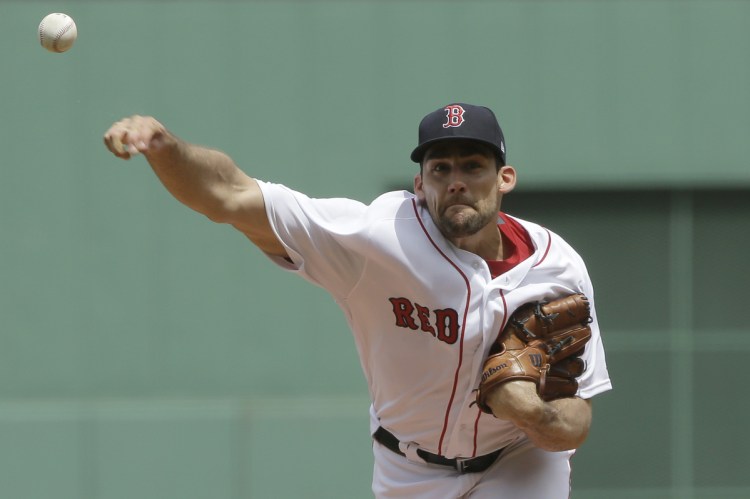FORT MYERS, Fla. — On the back fields of JetBlue Park, Nathan Eovaldi pitched batting practice on Wednesday morning – the first time he has faced live hitters since throwing six-plus innings in a heroic relief performance during Game 3 of the 2018 World Series.
Eovaldi has had more than four months to think about that game, and the part that stands out is not how well he pitched. It’s the loss next to his name that will forever appear in the history books.
With or without a brand new $64 million contract, Eovaldi feels like he’s got something to prove.
“To me, last season is over with,” said the Boston Red Sox right-hander. “Everything changes. And as well as I did in the postseason, in the World Series, I got the loss in that game. There’s always something you can improve on. For me, it’s a new season, the slate is wiped clean and it’s all starting now. I have to get back to where I was then and the way I was feeling with mechanics.”
Looking back on Game 3, Eovaldi will always be remembered for throwing 97 pitches with one day’s rest after making relief appearances in two straight games to open the World Series.
Dig deeper, though, and it’s how he did it that’s most unique.
Seven times over six-plus innings, Eovaldi started off a Dodger with a curve, the same pitch he had such little confidence in a few months earlier. In his final four starts with the Tampa Bay Rays, he didn’t throw one. And in his last eight starts with the Yankees before injuring his elbow in 2016? Not a single curve.
For all the talk about Eovaldi’s triple-digit fastball and increased usage in a cutter that led to his breakout performance in 2018, the biggest kept secret might’ve been Eovaldi’s curveball, which had gone from being unusable to perhaps his most important pitch.
As some wonder if the Red Sox made a wise investment by throwing $64 million at Eovaldi with both Chris Sale and Rick Porcello facing free agency after this season, there’s a lot to be said about what the Red Sox learned about Eovaldi in three months last season.
And what Eovaldi learned from the Red Sox.
“It was just eye-opening,” Eovaldi said. “Now I’m understanding this thing and that thing, and I felt like it really helped my curveball toward the end of the season. I knew I climbed on it, got too high on my arm slot. Working with (pitching guru Brian Bannister) helped me get to the point where it was at the end of the season.”
All seven of the first-pitch curves Eovaldi threw in Game 3 last October resulted in 0-1 counts. He threw 19 in total that game, tying the most he’s ever thrown in a single game in his career. And he threw them at an average speed of almost 83 mph, the hardest he’s ever thrown his curve, according to Brooks Baseball.
For years, that pitch averaged around 75-76 mph for Eovaldi, an anomaly considering how hard he threw everything else. Even last year, when Bannister and the Red Sox helped him rediscover his technique that led to a 4-mph jump, Eovaldi’s average curveball velocity of 79 mph was the slowest among the other 15 hardest-throwing starting pitchers in the game, per Fan Graphs.
Send questions/comments to the editors.



Comments are no longer available on this story